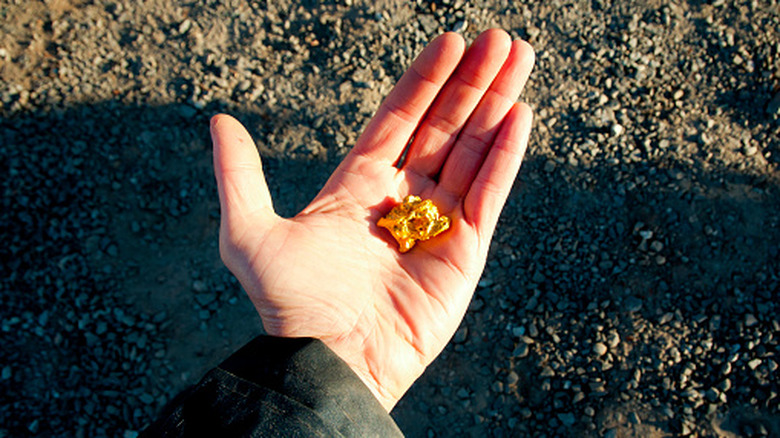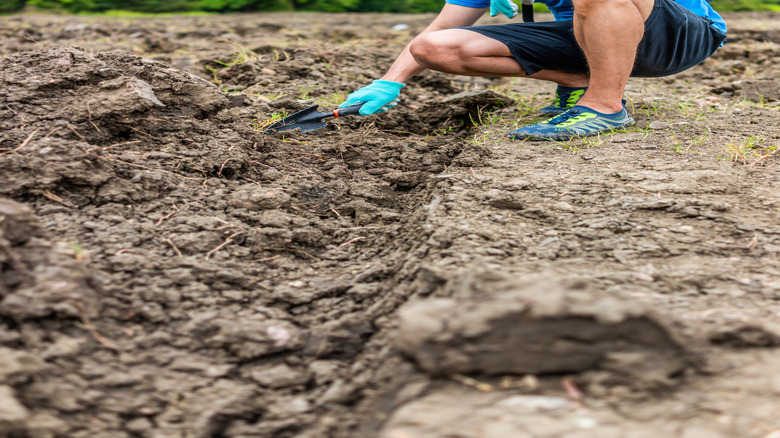Is It Legal To Take Home Gems Or Gold That You Find In Public Parks? It's More Complicated Than You Think
Is there anything more human than our fascination with shiny rocks? For eons, humans have traded with gems and minerals, built economies based on their worth, and collected them just to admire their beauty. Even now, when we trade in paper or digital money, the age-old tradition of digging for shiny rocks still has a hold on us. But it isn't easy to simply find and keep precious gems on public land anymore. The US regulates gemstone collection pretty strictly, so you'll need to know exactly where to look for them. Dig in the wrong place and you risk forfeiting the rights to the gems you find.
Most public land in the U.S. is managed by one of three agencies: The US Forest Service (USFS), the Bureau of Land Management (BLM), or the National Park Service (NPS). In general, national parks and recreation areas managed by the NPS prohibit gem collection entirely. The BLM or USFS generally allows gem collection for personal use, as long as it doesn't involve heavy equipment or disturb the land. However, before you start digging, check the BLM's Mineral and Land Records Service to see if anyone already owns the mineral rights to the land you're planning to dig. Some areas that are owned by the government may have separate mineral rights sold to private entities, meaning any gems found on that land belong to them, not you.
State parks are a little trickier, and you may need to contact them to check their rules on rockhounding. Most states prohibit it in state parks, although a few allow it in designated areas. The aptly named Rockhound State Park in New Mexico is one of the few state parks that actively encourages rockhounding, allowing visitors to keep any gems they find.
The best public gemstone collection sites
Luckily for all gem collectors, there are still several public areas where gem collection isn't just tolerated but encouraged. The most famous of these is the Crater of Diamonds State Park in Murfreesboro, Arkansas, one of the only state parks that is expressly maintained as a rockhounding site. While diamonds are the most valuable gems found here, the park also has large quantities of quartz, garnet, amethyst, and more. You pay $15 to enter the park, where you go through an orientation that teaches you how to identify and sift for diamonds, then you're let loose in the 37-acre area to search for diamonds on your own. The park has a finders keepers policy, so you get to take home any gems you find.
North Carolina has two public gemstone collection sites: The famous Emerald Hollow Mines in Hiddenite and the lesser-known, family-friendly Elijah Mountain Gem Mine in Hendersonville. Both sites follow pay-to-dig models like the Crater of Diamonds State Park, and they even have gift shops where you can polish and purchase gems.
In addition to these places, BLM-managed areas in Idaho, Wyoming, and Arizona are open to non-commercial collecting, as long as the areas have no existing mineral rights claims. You can contact the local BLM offices in these states to get maps of public and privately owned land and find out where you can safely and legally go gem collecting. The BLM also has a handy list of rockhounding areas across the country that you can check out to avoid the hassle of juggling mining licenses, permits, property lines, and state regulations.

